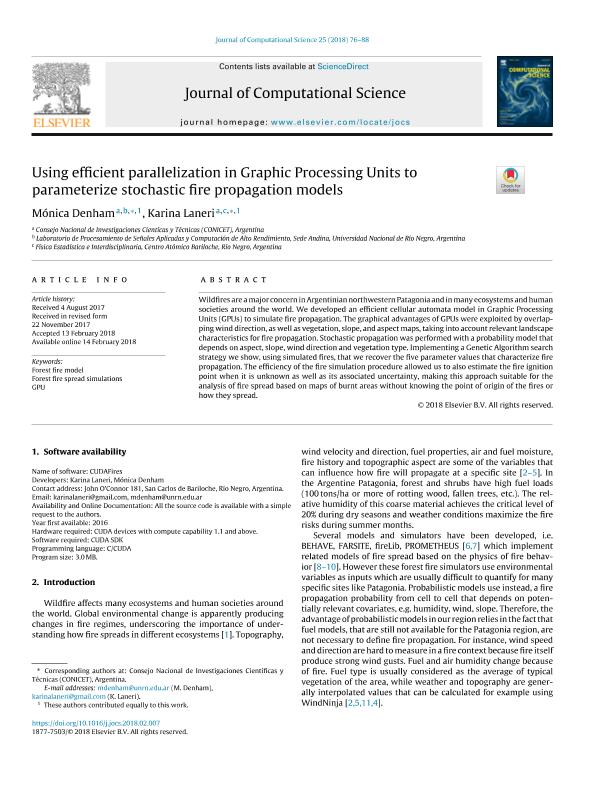Artículo
Using efficient parallelization in Graphic Processing Units to parameterize stochastic fire propagation models
Fecha de publicación:
03/2018
Editorial:
Elsevier
Revista:
Journal of Computational Science
ISSN:
1877-7503
Idioma:
Inglés
Tipo de recurso:
Artículo publicado
Clasificación temática:
Resumen
Wildfires are a major concern in Argentinian northwestern Patagonia and in many ecosystems and human societies around the world. We developed an efficient cellular automata model in Graphic Processing Units (GPUs) to simulate fire propagation. The graphical advantages of GPUs were exploited by overlapping wind direction, as well as vegetation, slope, and aspect maps, taking into account relevant landscape characteristics for fire propagation. Stochastic propagation was performed with a probability model that depends on aspect, slope, wind direction and vegetation type. Implementing a Genetic Algorithm search strategy we show, using simulated fires, that we recover the five parameter values that characterize fire propagation. The efficiency of the fire simulation procedure allowed us to also estimate the fire ignition point when it is unknown as well as its associated uncertainty, making this approach suitable for the analysis of fire spread based on maps of burnt areas without knowing the point of origin of the fires or how they spread.
Palabras clave:
FOREST FIRE MODEL
,
FOREST FIRE SPREAD SIMULATIONS
,
GPU
Archivos asociados
Licencia
Identificadores
Colecciones
Articulos(CCT - PATAGONIA NORTE)
Articulos de CTRO.CIENTIFICO TECNOL.CONICET - PATAGONIA NORTE
Articulos de CTRO.CIENTIFICO TECNOL.CONICET - PATAGONIA NORTE
Citación
Denham, Mónica Malen; Laneri, Karina Fabiana; Using efficient parallelization in Graphic Processing Units to parameterize stochastic fire propagation models; Elsevier; Journal of Computational Science; 25; 3-2018; 76-88
Compartir
Altmétricas




